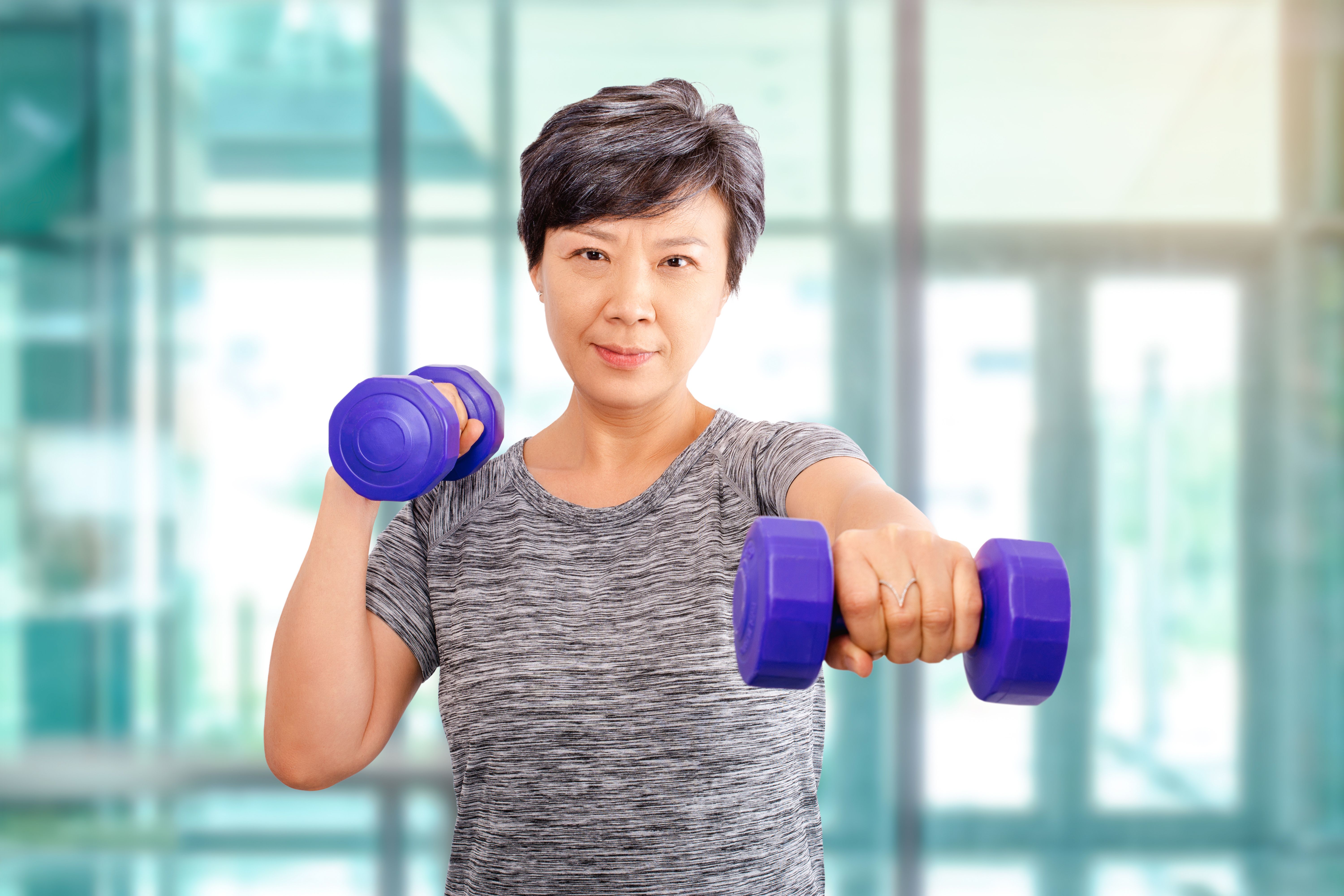- General Dermatology
- Eczema
- Alopecia
- Aesthetics
- Vitiligo
- COVID-19
- Actinic Keratosis
- Precision Medicine and Biologics
- Rare Disease
- Wound Care
- Rosacea
- Psoriasis
- Psoriatic Arthritis
- Atopic Dermatitis
- Melasma
- NP and PA
- Skin Cancer
- Hidradenitis Suppurativa
- Drug Watch
- Pigmentary Disorders
- Acne
- Pediatric Dermatology
- Practice Management
Are Aerobics or Weights Better for Aging Skin?
Resistance training rejuvenates aging skin differently than aerobics training, according to a new study.
tai/AdobeStock

Exercise benefits more than just cardiovascular health—it can help aging skin bounce back as well.
And surprisingly, it’s not just aerobic training that does skin good; resistance training can have a positive effect on skin’s elasticity, structure, and thickness, a study of previously sedentary women has found.
Although the benefits of aerobic exercise to general fitness and skin health are well known, the study authors noted, there is a lack of evidence showing that resistance training directly benefits the skin.1
Citing one previous study that showed aerobic exercise stimulates release of interleukin 15, which regulates skin aging by enhancing mitochondrial biogenesis,2 the authors posited that resistance training may affect skin through a different mechanism.
“Other research has focused on myokines as mediators between exercise and various beneficial effects of exercise on health because the secretion of myokines, including IL-15, is mainly induced by exercise,” study authors Shu Nishikori et al noted.
“Interestingly, aerobic training and resistance training have different effects on circulating levels of various factors, and consequently, we hypothesized that they may have different effects on skin aging.”
The study, which was conducted in Japan by researchers at Ritsumeikan University in Kusatsu, appeared in the journal Scientific Reports.
Study Methods
In a randomized study in 56 healthy, sedentary middle-aged Japanese women, Nishikori et al measured circulating levels of various factors (ie cytokines, serum hormones, and plasma metabolites) in blood samples taken from participants before and after a training intervention.
The intervention involved 26 of the women undergoing aerobic exercise twice a week for 16 weeks, and 30 of the women performing resistance training twice a week for 16 weeks. Both groups were supervised by certified trainers.
Blood samples were taken before and after the exercise intervention.
Results
Nishikori et al found the aerobic intervention significantly decreased body weight and body mass index, and significantly improved peak oxygen uptake; the resistance training intervention significantly increased lean soft tissue mass and muscular strength.
Skin elasticity and upper dermal structure, assessed as the rate of low echogenic pixels, improved significantly in both groups, and dermal thickness increased in the resistance training group, they reported.
Additionally, in both groups, blood testing showed expression of dermal extracellular matrix-related genes such as those encoding collagens (COL3A1, COL6A1, and COL14A1), hyaluronan synthase, and proteoglycans (decorin, versican, and chondroitin polymerizing factor) was increased in plasma after training compared with before training.
After aerobic training, blood testing showed the expression of other collagen genes (such as COL1A2, COL5A1, and COL12A1) was increased, and after resistance training, the expression of other proteoglycan-related genes, such as biglycan and chondroitin sulfate synthase 1, was increased.
Although both aerobic training and resistance training have beneficial effects on skin, Nishikori et al reported, “our findings suggest that the increase in dermal thickness is a specific effect of [resistance training] on the skin.” Resistance training also attenuates the circulating level of inflammatory factors and improves dermal aging, they concluded.
References
- Nishikori S, YasudaJ, Murata K et al. Resistance training rejuvenates aging skin by reducing circulating inflammatory factors and enhancing dermal extracellular matrices. Sci Rep 13, 10214 (2023). https://doi.org/10.1038/s41598-023-37207-9
- Crane JD et al. Exercise-stimulated interleukin-15 is controlled by AMPK and regulates skin metabolism and aging. Aging Cell 14, 625–634 (2015).
